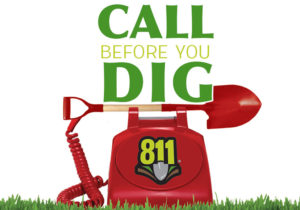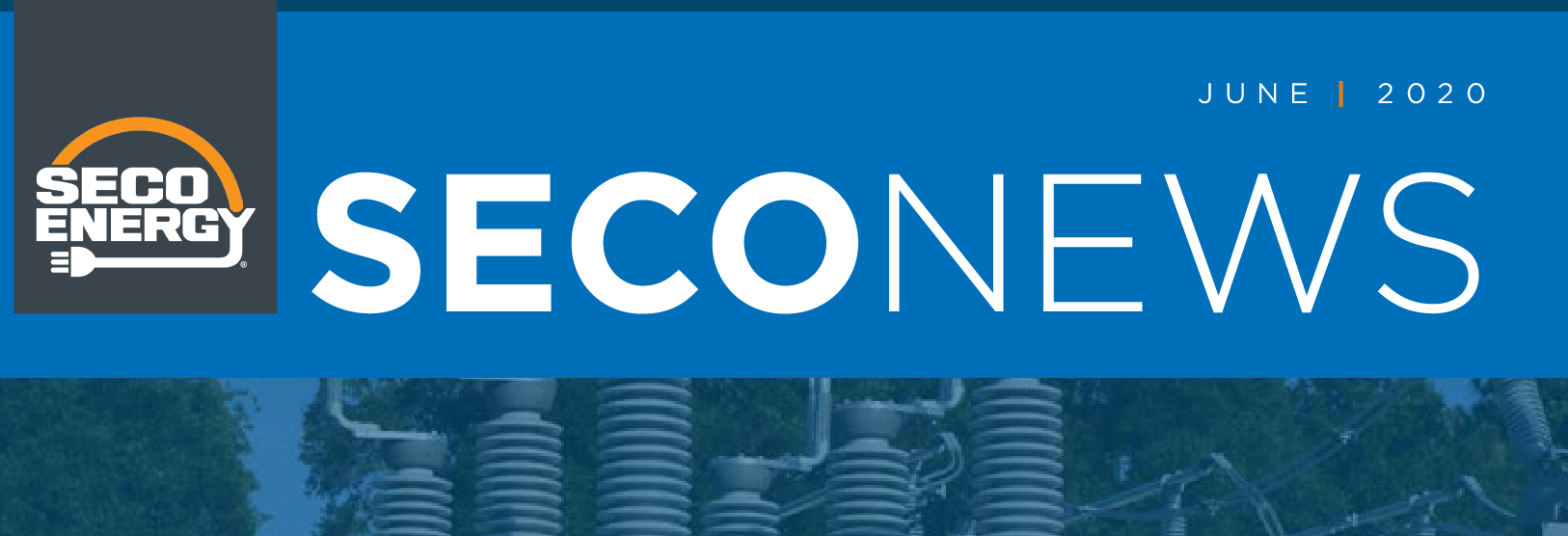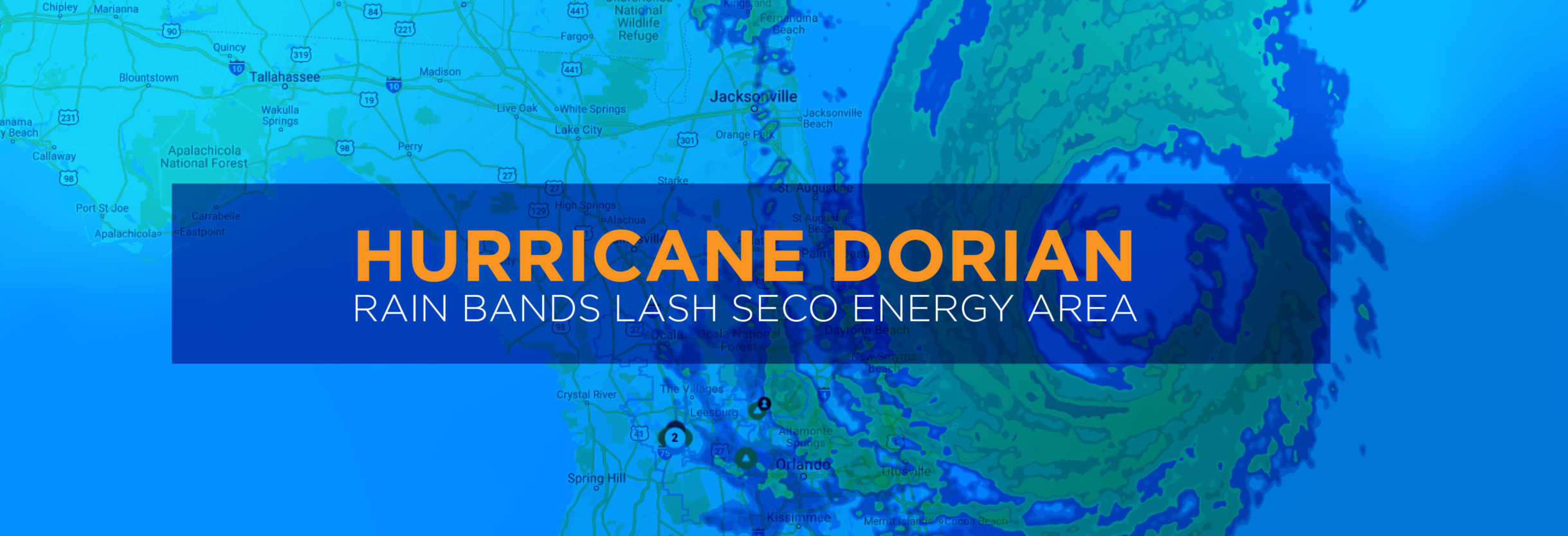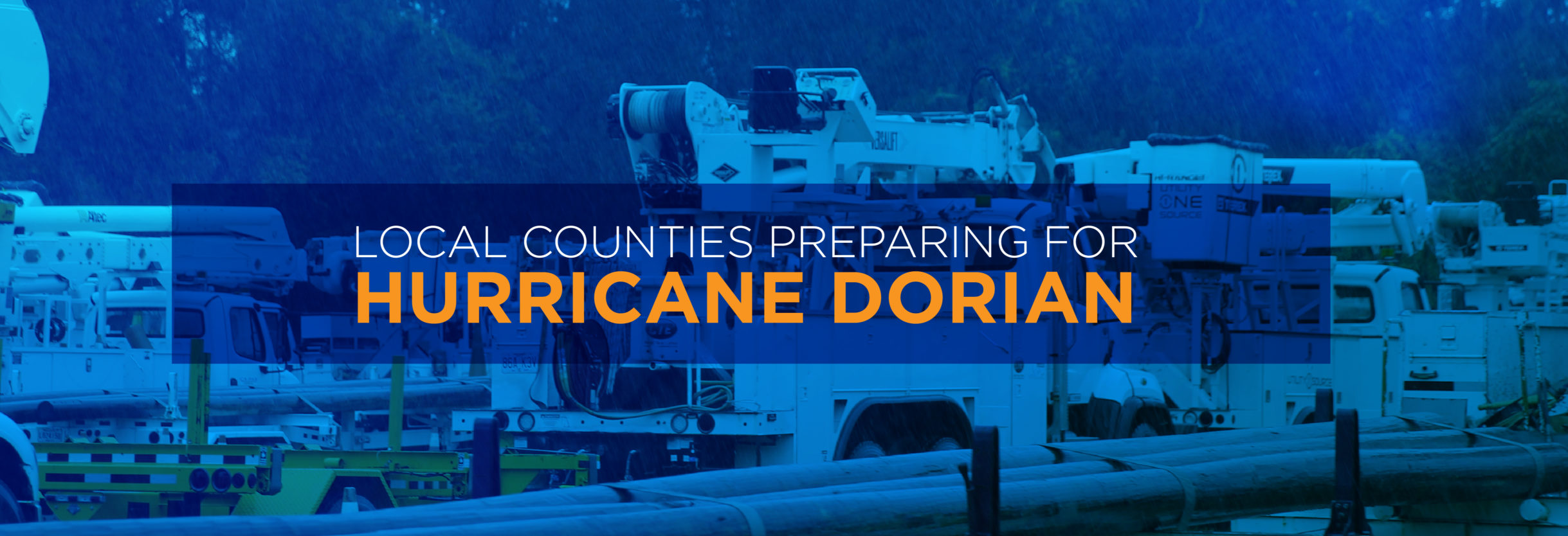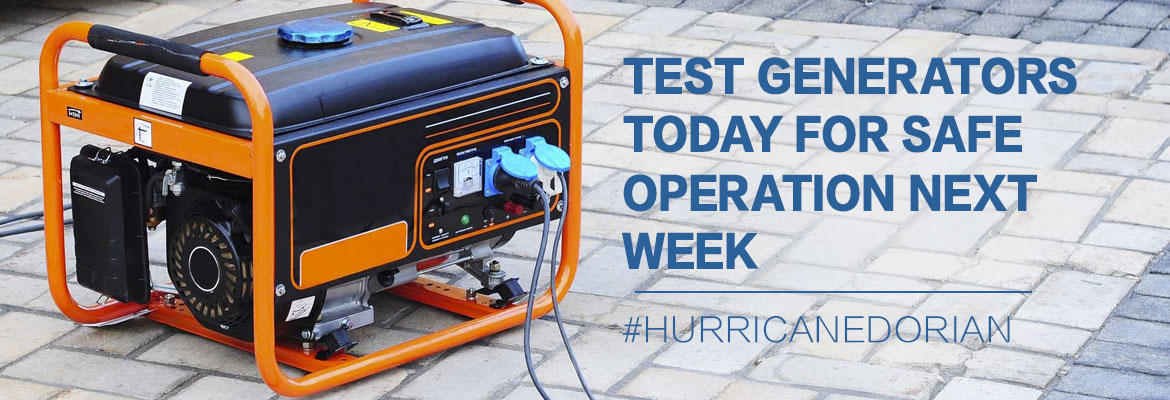SECO News, June 2020
Duncan’s Digest – High Risk Hurricane Season
My background by trade is accounting and finance. I have a healthy belief in data analysis to project trends. The percentages below certainly get my attention and should grab yours as well.
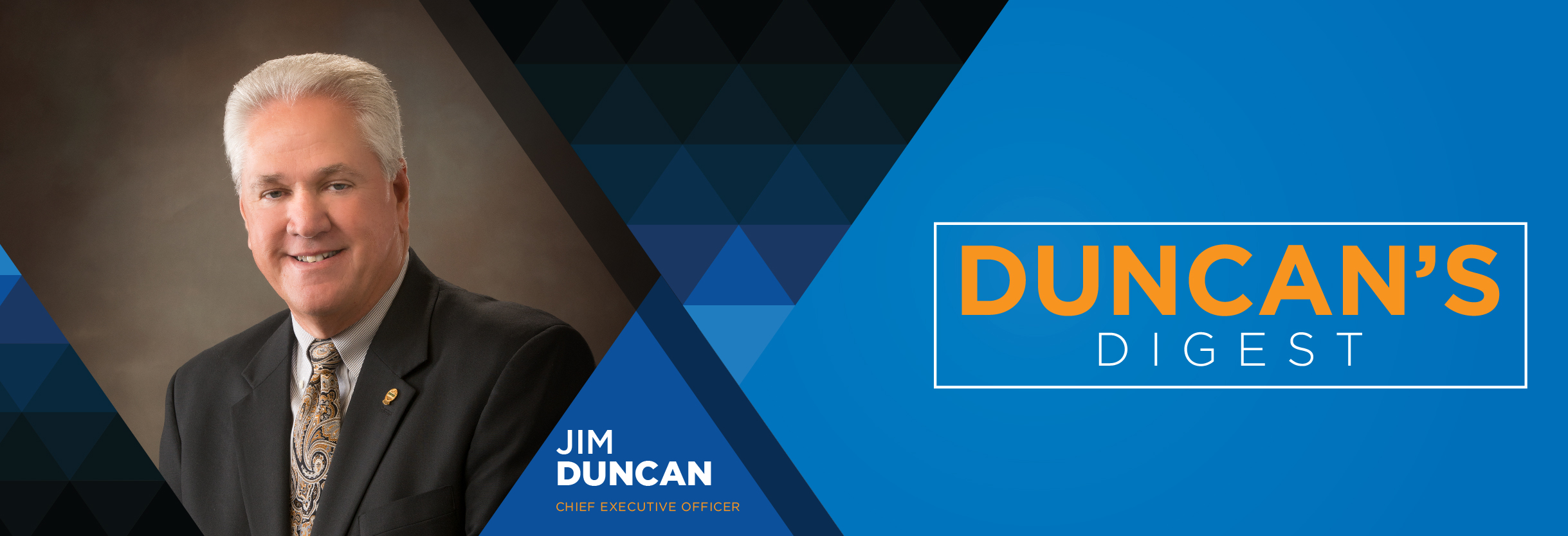
The Department of Atmospheric Science at Colorado State University (CSU) published its Atlantic hurricane season forecast in April. These experts predict the 2020 Atlantic hurricane season will have above-normal activity. This includes the probability of major hurricanes (Category 3, 4 and 5) to make landfall along the U.S. coast and in the Caribbean based on historical and 2020 probability trackers.
Historically between 1878 and 2017, Florida had a 51% probability of a hurricane spinning into the state. The probability of a major hurricane was 21%. CSU’s probability tracker for 2020 reflects an increased chance of 68% of a hurricane affecting the state. The probability that at least one major hurricane will make Florida landfall is 31%.
For the Gulf Coast, the probability of at least one major hurricane making landfall is 44% which is above the historical average. For the U.S. east coast including Florida, the probability of at least one major hurricane making landfall this year is 45% which is also above average.
While these statistics are troubling, the fact is that living on the Florida peninsula surrounded by water, we are bound to feel the effects of tropical storms and hurricanes. Preparing before they happen is critical.
SECO Energy is StormReady and strongly encourages your family to practice hurricane preparedness. Our storm hardening efforts include replacing aging distribution poles, upgrading transmission poles from wood to concrete and trimming trees that encroach on power lines.
StormReady also includes our $1 million investment in our outage map, reporting tools, status checker and communications platform called StormCenter. Members can proactively enroll to receive outage communications through email, text, voice messages or all three.
StormCenter identifies the service locations affected by an outage and proactively sends a notification with the estimated restoration time, crew status and more. Once service is restored, you’ll receive a message that includes the outage cause if known. You can set do not disturb times if you don’t want to be called in the middle of the night about an outage or restoration. To choose notification preferences, visit StormCenter on the website and click on the Manage Notifications tab.
Reporting a new outage or checking the status of an existing outage with your smartphone or tablet is easy. Click “Report Outage” and enter the account holder’s last name and house number (or the account or phone number). Find the status of an existing outage on the Check Status tab.
Create a StormReady plan for your family that includes gathering emergency supplies, reading our Hurricane Handbook, enrolling in county alerts and saving your county Emergency Operations Center (EOC) number on your phone.
Prepare for the worst, hope and pray for the best and know that it is our privilege to serve as your energy provider.
Sincerely,
Jim Duncan
Chief Executive Officer
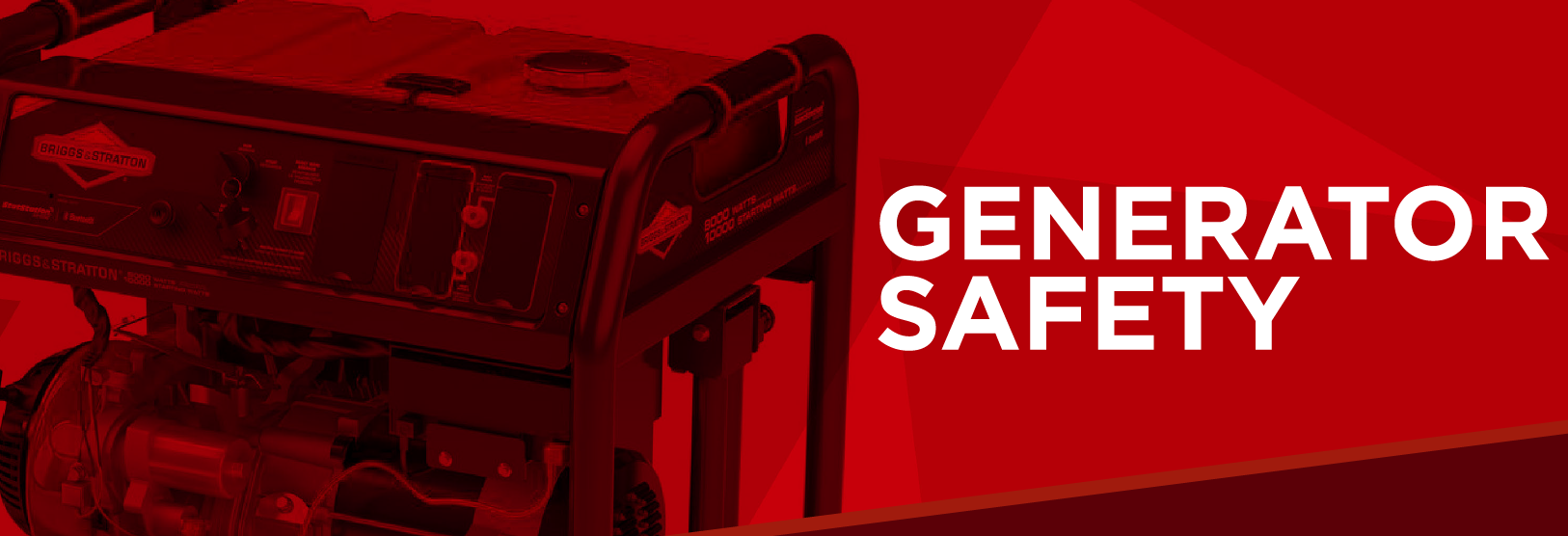
Generator Safety
Are you considering purchasing an in-home generator as a back-up power source during unexpected power outages? Know the difference between stationary and portable generators and learn safety tips that save lives.
Stationary generators are permanently affixed with an approved disconnect and transfer switch that isolates your home’s circuits from SECO Energy’s electric system. This isolation eliminates the risk of backfeeding onto utility lines. Installing a stationary generator is not a DIY project. Contact a licensed electrician.
Portable generators are more common than stationary. Portable generators use extension cords to plug desired appliances into the generator.
Generators emit deadly carbon monoxide (CO) gas that is odorless and colorless. The Centers for Disease Control and Prevention recommends installing a battery-operated CO detector in your home. Place the detector where the alarm will wake you up – just outside bedroom doorways is a good choice. Never run a generator outside an open window or in an enclosed area such as a garage. Also, never use a generator in the rain. You can be shocked or killed.
Always read your unit’s safety and instruction manual before operating. Visit our Generator Safety page for more safe operating tips and watch our video to learn how to size a generator correctly.
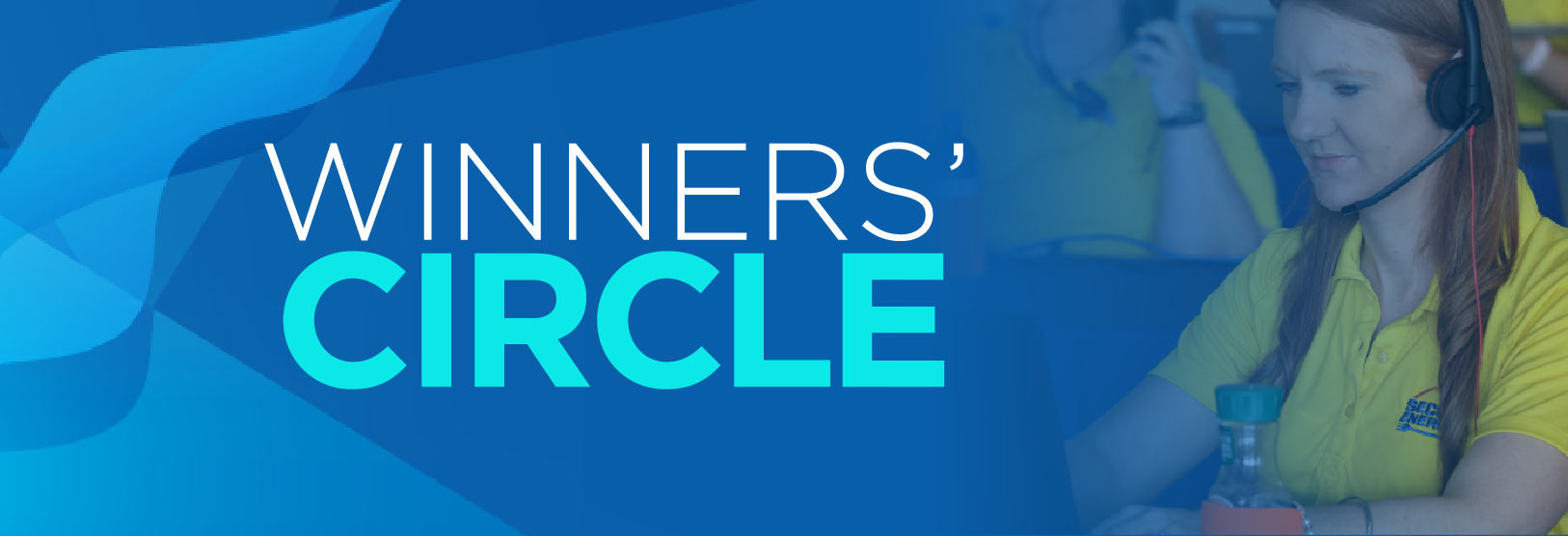
Winners’ Circle
Welcome ELECTRA as our new IVR virtual assistant. Thank you, members, for voting to help us name our newest SECO representative. ELECTRA assists with billing inquiries, outage reporting, checking the status of a current outage and automated payment arrangements.
ALL MEMBERS WHO VOTED WERE ENTERED TO WIN ONE OF FIVE GREAT PRIZES.
Winners:
$250 SECO BILL CREDIT – Amanda Robertson, Clermont
RING DOORBELL – Larry Bocharski, Deland
NEST LEARNING THERMOSTAT – Scott McConnell, Lake Panasoffkee
AMAZON ALEXA – John Halpin, Ocala
AMAZON FIRE TABLET – Warren Hammersla, The Villages
Congratulations winners!
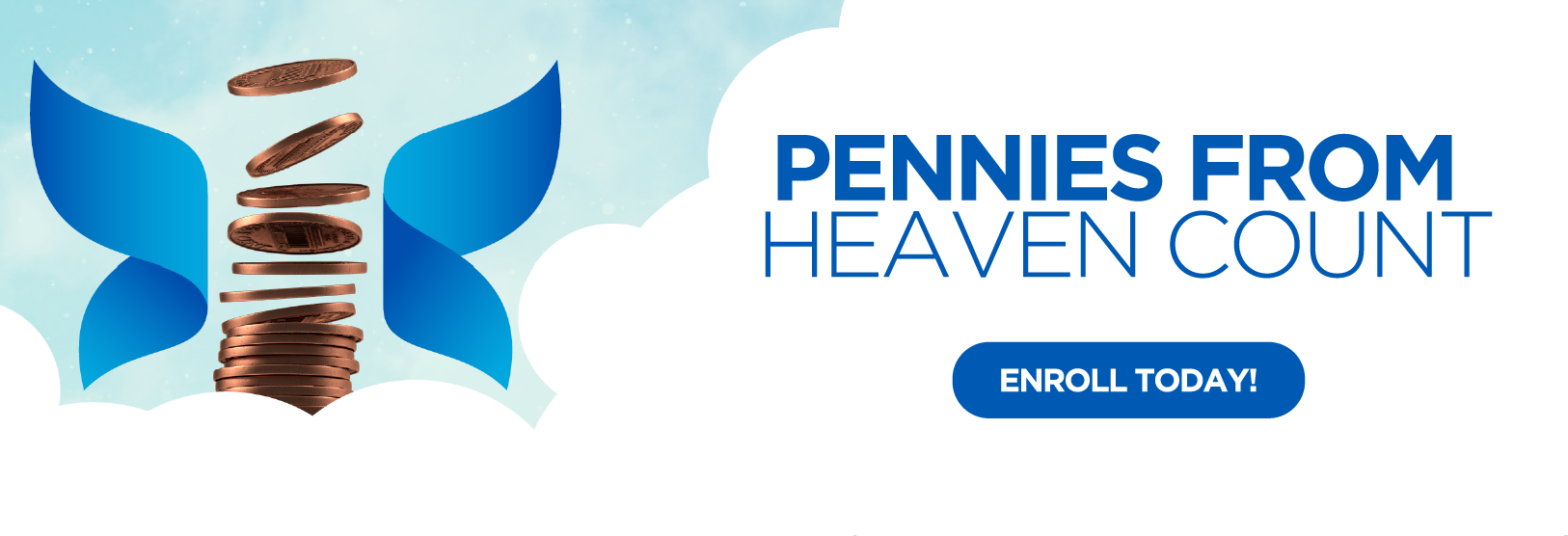
Pennies from Heaven Count – Enroll Today
Thousands of SECO residential members and small business owners have been unable to pay their electric bills since the economic effect of COVID-19 hit. Can you help? Enroll in our Pennies from Heaven program to round up your monthly bill to the nearest dollar. The donated pennies fund bill payment assistance for SECO members. The average donation is $6 per year. Visit our Pennies from Heaven page to enroll. Members can also enroll through SmartHub. Choose “Bill & Pay” and click on “Pennies from Heaven.” You will need to accept the Terms & Conditions and click “Round bill to next dollar each month.”
If you prefer to make a one-time donation, send a check to SECO Energy, Attn: Corporate Communications, P.O. Box 301, Sumterville, FL 33585.
For members who have already enrolled, thank you for your generosity and your willingness to help your neighbors and communities. Your pennies make a difference in the lives of members in need. If you need help, text or call Florida 211 for resources in your area supported by SECO Pennies from Heaven funding.
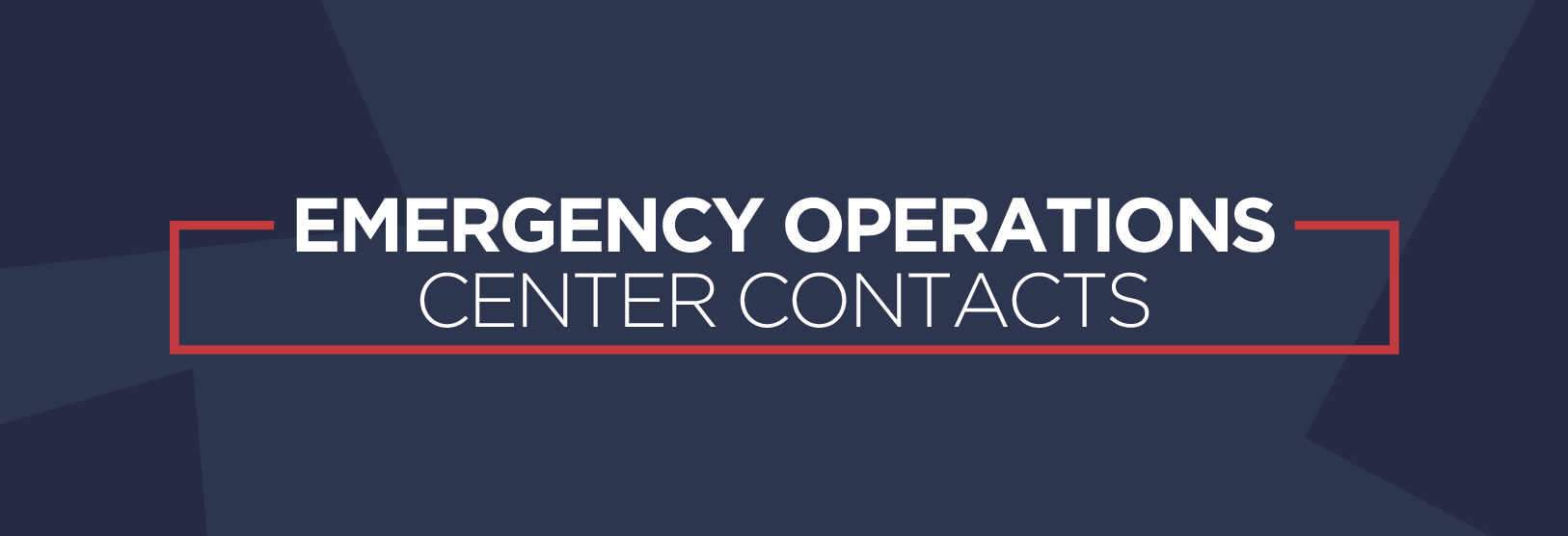
EOC Contacts
AS PART OF YOUR FAMILY’S STORMREADY PLAN, sign up for emergency alerts from your local Emergency Operations Center (EOC). Visit your county’s EOC website for resources such as shelter information, storm planning, evacuation orders and more.
To enroll in your county’s emergency alerts, visit the Florida Disaster website. Enter the county or city and follow the enrollment link. Program your county’s number on your phone to have at your fingertips.
Citrus County EOC (352) 527-2106 or (352) 746-5470
Hernando County EOC (352) 754-4083 or (352) 754-4111
Lake County EOC (352) 343-9420
Levy County EOC (352) 486-5213
Marion County EOC (352) 369-8100
Pasco County EOC (727) 847-8137
Sumter County EOC (352) 689-4400
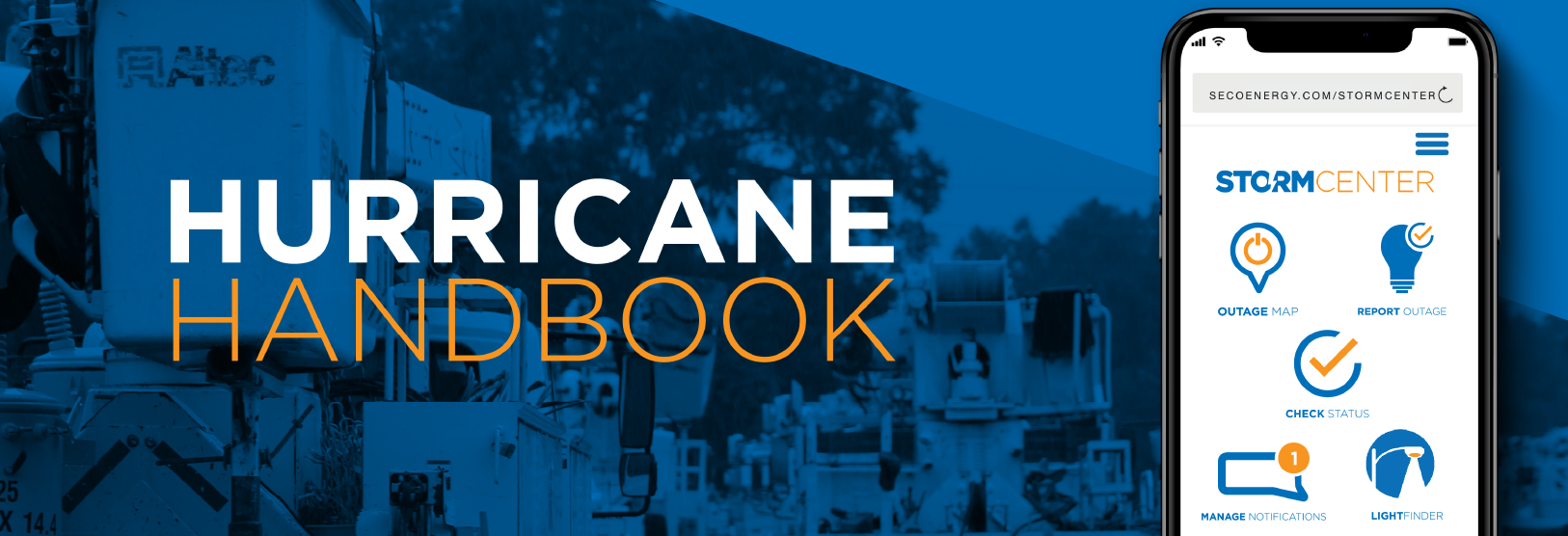
Hurricane Handbook
The SECO Energy Hurricane Handbook is your one-stop guide to being StormReady before, during and after a storm.
The Hurricane Handbook defines hurricane category strength, outlines our restoration priority and dispels the myth that SECO disconnects service in advance of an approaching storm. Before a storm arrives, bookmark both StormCenter and our Daily Restoration Plan map on your smartphone or tablet. Enroll in your county’s alert notifications at FloridaDisater.org. We’ve included a seven-day supply stock-up list for you and your pets and advice for members who require electricity for medical equipment. Back-up generation is critical for these special needs members.
What to do during a storm? Hunker down and stay informed. Remain indoors and prepare to wait out the weather safely. SECO Energy crews are dispatched to begin restoration only after winds are under 35 mph. Read about the difference between a tornado watch versus a warning. Read the sections on Electric System 101 and Generator Safety.
Assess your home or business to make sure it’s safe before you return. If you experience damage, turn off your main breaker if it is safe to do so. If appliances are wet, turn off each appliance’s breaker and then unplug. Check our above ground and underground service diagrams to assess electric damage and know when to call an electrician for repairs.
Focus on your family’s safety by heeding storm watches and warnings. Stock up on hurricane essentials – buy early. When a storm approaches supplies sell out quickly.
Read the full June 2020 SECO News online.

